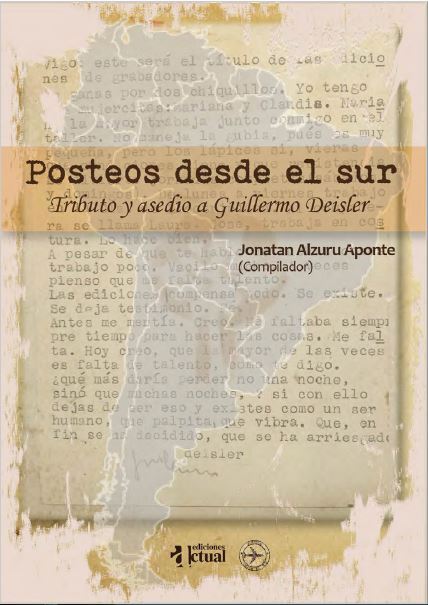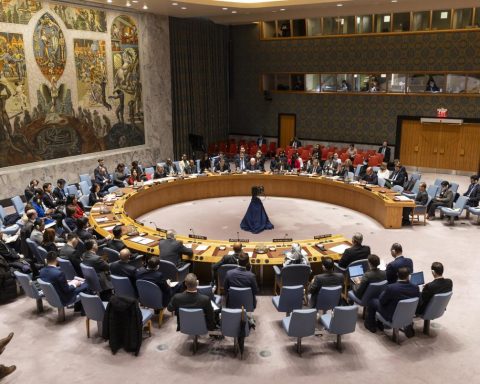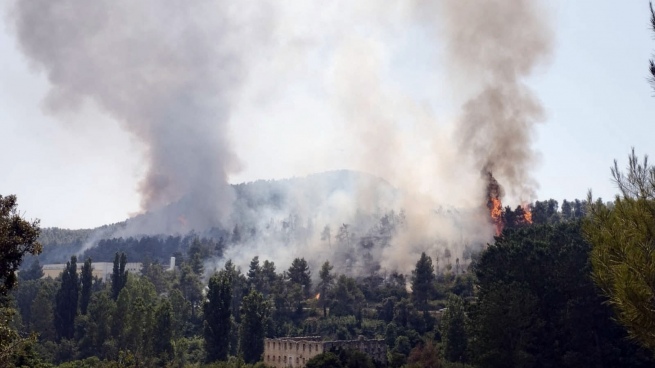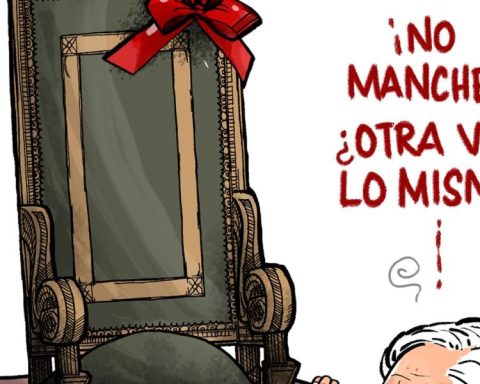By MARIA ELENA RAMOS
The book Posts from the south. Tribute and siege to Guillermo Deisler raises essential issues of our time. I will outline a few: distance, separation, loneliness, loss. // The urgency of dialogue. // The letter as a bridge: alternate closeness. // Fragmentary writing and reading in a way of being in our time. // An art that values communication, that does not run away from it but rather incorporates it. // Finally, this book as a Latin American encounter, between Venezuela and Chile.
With the support of our Universidad de Los Andes and the Universidad Austral de Chile, and the enthusiastic leadership of Jonatan Alzuru, this book brings to the present a liberal update of mid-20th century mail art. But today there is no longer the postman of that time, but the technological network. It is the pass of mail art still art of email.
This book that we have read on the screen shows how to produce an dialogue that, even without looking at each other face to face, is truly dialoguing, and at the same time is related to the fragmentary —but collaborative— way of building Meaning. Thus this book is, in itself, a fragment of a way of being of our time. And it is that Jonatan and the participants know that this fragmented way of living is irremissible today, a way so often reviled, but also assumed and enjoyed, as we feel in front of these fragments that become fluid in the pleasure of dialogue-as-game, as Gadamer would like: dialogue as playful action between one who gives and another who receives. But here there is no longer sway between two, but rather a communicating fugue between many, a counterpoint with successive bounces where roles, places and encounters alternate.
Here an aesthetic being is also granted to this broken, altered and torn visuality, to this non-linear legibility, which rejoices in sending a sender to a receiver, to a sender, to a receiver… and in showing that the main message of this extended network is the communicative act itself. (Already at the time, mail art had freed itself from the taboo of fear of communication—which many artists had suffered from—generating more uninhibited processes of art-as-communication, and giving alternative space to communication-as-art. ).
There is a very serious action here, but also jovial and flexible, where feeling is as present as reflection, where being with the other is as essential as the solitary act of writing; where the loneliness of the writer is, intermittently, a very intimate pleasure… or an enemy to drive away. For the latter, due to the facet of enemy that loneliness can have, Jean Francois Lyotard once told us in Caracas: “In the dialogue, one says to the other: ‘don’t leave me alone’. Also to face loneliness and isolation, there was Mail Art and a work like that of Guillermo Deisler, to whom this book pays tribute.
There is an empty area that is emerging, is being installed, taking a body that is not our body, to distance us. Hazy and gray space, like uncertainty. Dark, like the powers exercised, in our America and the world, to crush and not to build or facilitate. Sticky or sharp like aggression and rejection of someone who is different, who is not included in the wide perimeter of acceptance, much less in the close perimeter of the embrace.
Mail art is not only an aesthetic form but also an ethical, political and affective one: a rapprochement of distances in times of collective and personal crisis. I am interested in tracing a thread between the postman who brought the long-awaited letters from his parents to my parents, the journey in my childhood, with my mother, to post the letters to my grandparents in the Carmelitas mailbox, the eternal epistolary need of the human being, which is dramatized in times of war, and mail art that artists such as Guillermo Deisler, Clemente Padín, Liliana Porter, Luis Camnitzer, Felipe Ehrenberg, among others, mobilized in America.
There are different ways of being activated in the face of distance, of not letting it depress and deprive us by separating us from what we continue to love. The old letters, the e-mails, the zoom like this one that brings us together, are ways —partial but essential— to preserve humanity in us. Faced with the long distance, shortening must be produced. That is what this mediated, remote dialogue is for.
There are immense distances, which cannot be measured only in kilometers, cities and continents. Radical distances, exiles, displacements, loss of place, of certainties, of identity, of rights. From this forced distance Chileans, Argentines, Uruguayans, Colombians, Europeans have known in times of tyranny when many took refuge in the generous and receptive Venezuela that we knew and were able to join creation, teaching, intellectual work and became our teachers. , our classmates, our friends. Here I want to honor the memory of my beloved philosopher teachers from the Southern Cone, Arturo Ardao, Ángel Cappelletti, José Jara, Ezra Heymann, Xavier Sasso, integrated into the USB and the UCV. But ours is no longer that country that receives emigrants, now we are highly exposed emigrants and the world’s screens divulge the exodus of our walkers who seek freedom, even harming their health, moving from border to border from this north of South America – that, from so far north, Miguel Ángel Asturias called our mount Ávila “the shoulders of America”, and even the (further) Southern Cone of this continent that we share.
More recently other distances have been created by the pandemic. Isolated in confinement, and with what they elegantly call “social distance”, we are distanced, we are alerted, touch and caress are banned. But the eyes are enhanced: we make contact with the gaze —contact without touch— always above the mask.
In the visual poetry that mail art brought and brought, the eye also mattered. If in Guillermo Deisler writing spread Concept and Meaning, it also showed itself, becoming a graphic form that burst against the excess of reason, since it was no longer just a discursive instrument. In visual poetry, the word makes one think, but it is also exposed and illuminated.
They were advances to an awareness of hybridity that is now a way of being in our time. But it is not surprising: singular creators such as Guillermo Deisler reveal to future.


















